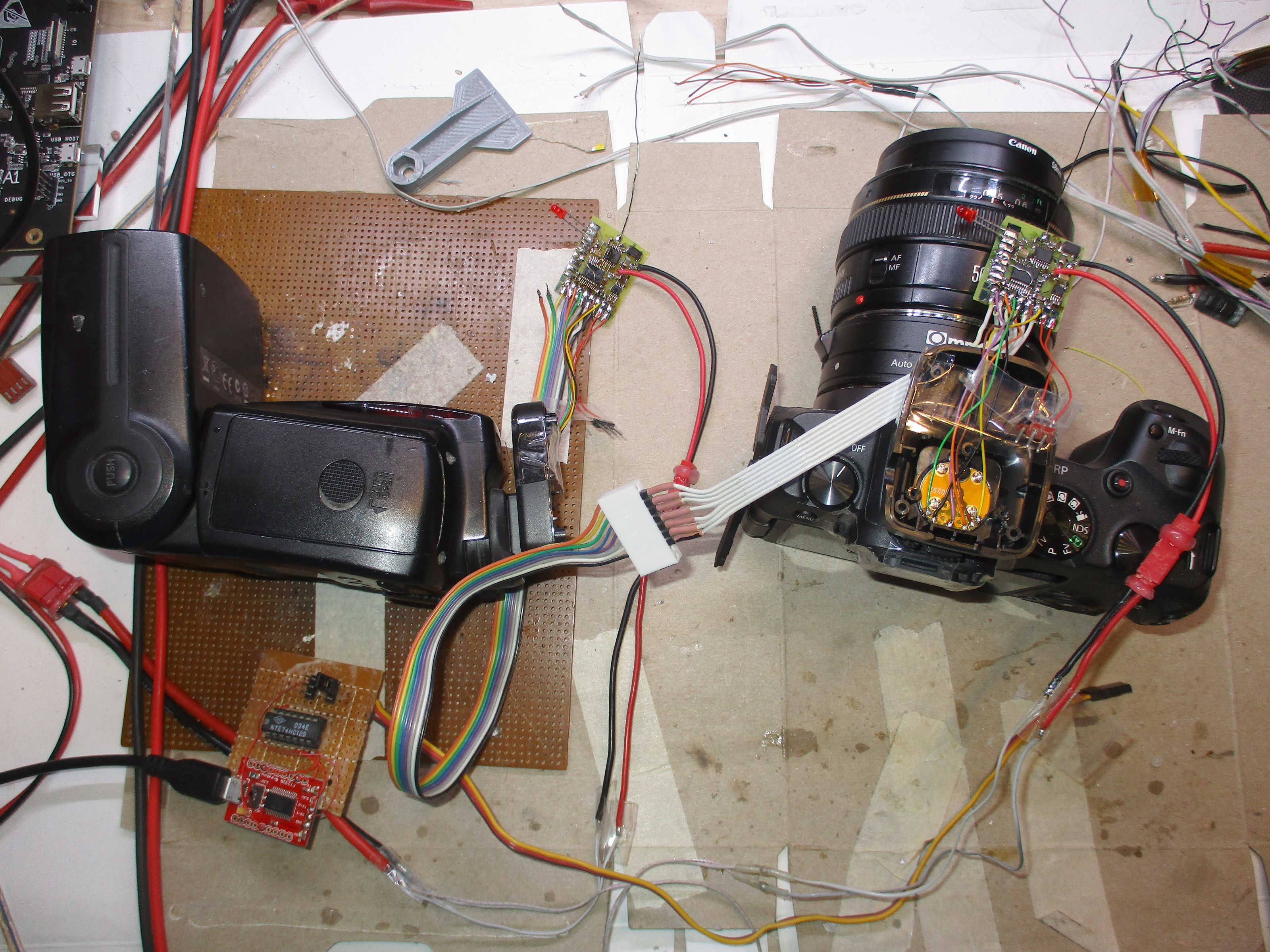
Definitely cleaner without the programming headers.
Sadly, the bypass circuit doesn't work reliably. This wasn't previously tested very thoroughly. The camera is prone to locking up, manely after the flash fires. The flash user interface doesn't detect any button presses, especially exposure compensation. It may be the voltages really have to go to 5V. The circuit is going to limit them to 3.3V.
It would require a 5V micro with resistor ladders to create the analog voltages, op amps for buffering, 1Mhz ADC for reading the analog voltages. It's on the scale of building a confuser from scratch. There are animals who build confusers from scratch. Just not sure it's worth eliminating a cable.
It busts another idea about converting a vintage flash to ETTL.
There needs to be a test board to see if all the analog voltages or just 5V are required. It could be a bag of comparators.
Noted a minimum 50us gap between bytes for framing. The flash always shows the current F stop value outside of metering mode so it doesn't just need preflash & flash triggers. CLK goes to ground when the camera is 1st powered up, in addition to the other cases described.
A fully manual, wireless flash would be easy to cobble together, but that's not what lions want.
The top of the line Godox increased from $180 to $200. Maybe a cable isn't so bad. The wireless idea was manely about the cable wearing out & convenience, but it seems to be not very compelling. A radio is a big failure point.
 lion mclionhead
lion mclionhead
Discussions
Become a Hackaday.io Member
Create an account to leave a comment. Already have an account? Log In.